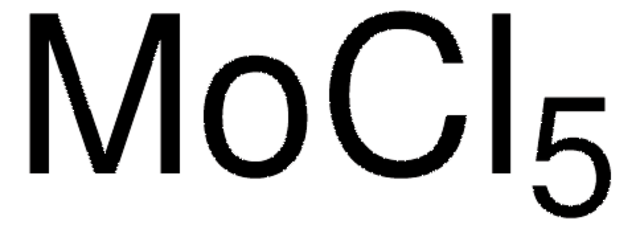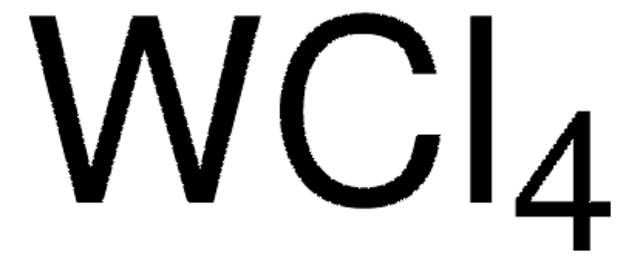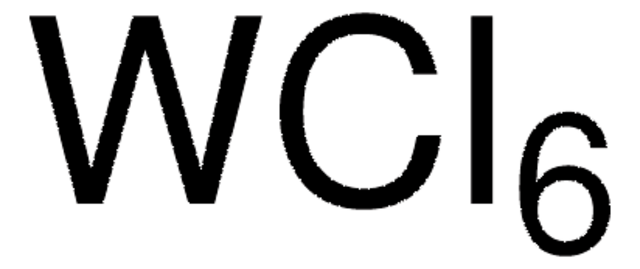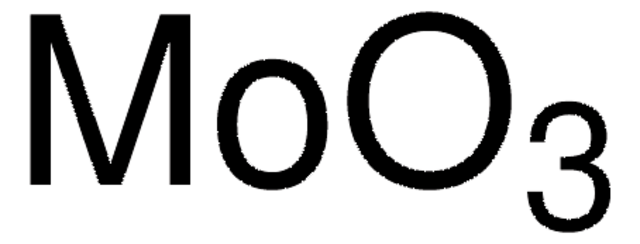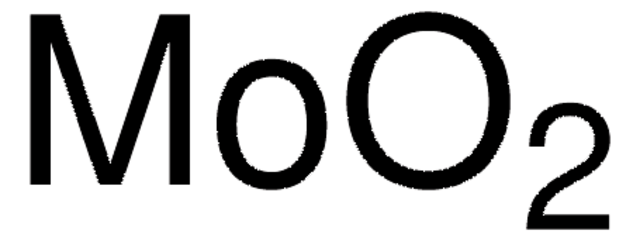339334
Molybdenum(III) chloride
99.95% trace metals basis
Synonym(s):
Molybdenum trichloride, Trichloromolybdenum
About This Item
Recommended Products
Assay
99.95% trace metals basis
form
powder
reaction suitability
reagent type: catalyst
core: molybdenum
impurities
≤550.0 ppm Trace Metal Analysis
solubility
H2O: insoluble(lit.)
density
3.58 g/mL at 25 °C (lit.)
application(s)
battery manufacturing
SMILES string
Cl[Mo](Cl)Cl
InChI
1S/3ClH.Mo/h3*1H;/q;;;+3/p-3
InChI key
ZSSVQAGPXAAOPV-UHFFFAOYSA-K
Signal Word
Warning
Hazard Statements
Precautionary Statements
Hazard Classifications
Eye Irrit. 2 - Skin Irrit. 2 - STOT SE 3
Target Organs
Respiratory system
Storage Class Code
11 - Combustible Solids
WGK
WGK 3
Flash Point(F)
Not applicable
Flash Point(C)
Not applicable
Personal Protective Equipment
Regulatory Information
Choose from one of the most recent versions:
Already Own This Product?
Find documentation for the products that you have recently purchased in the Document Library.
Articles
Ultrasonic spray pyrolysis produces scalable nanomaterials like metal oxides and quantum dots for diverse applications.
Micro review of reversible addition/fragmentation chain transfer (RAFT) polymerization.
Protocols
We present an article about RAFT, or Reversible Addition/Fragmentation Chain Transfer, which is a form of living radical polymerization.
Polymerization via ATRP procedures demonstrated by Prof. Dave Haddleton's research group at the University of Warwick.
Our team of scientists has experience in all areas of research including Life Science, Material Science, Chemical Synthesis, Chromatography, Analytical and many others.
Contact Technical Service